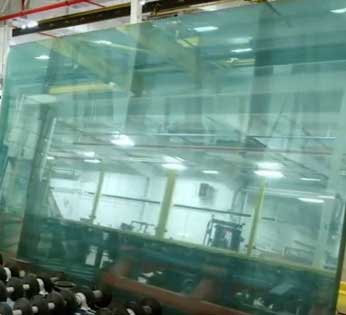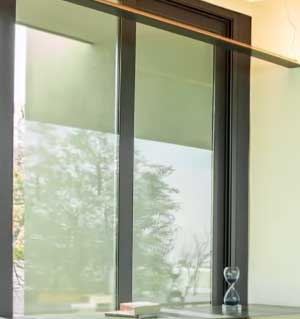When it comes to energy efficient windows, one of the most important components is the type of low-e (low-emissivity) glass used in the insulated glass unit. Two of the most popular low-e glass options on the market today are Cardinal 366 and PPG Solarban 70.
But what exactly are the differences between these two products and how do you know which is the better choice for your home?
This comprehensive guide examines the pros, cons, features, and performance factors of Cardinal 366 and Solarban 70 to help you make an informed decision.
A Brief Comparison Table
Now let’s compare some of the key performance metrics between Cardinal 366 and Solarban 70:
| Feature | Cardinal 366 | Solarban 70 |
| Manufacturer | Cardinal Glass | PPG Glass |
| Low-E Coating | Triple silver | Double silver |
| U-factor | 0.23 | 0.28 |
| SHGC | 0.27 | 0.27 |
| Visible Light Transmittance | 60% | 65% |
| UV Blockage | 99%+ | 99%+ |
| Tint Color | Neutral blue-green | Pale green |
| Cost | High-end | Mid-range |
| Best Suited For | Maximum efficiency | Performance and value |
Both glasses have identical 0.27 SHGC ratings to block solar heat gain. However, Cardinal 366 has a significantly lower U-factor, meaning it insulates much better against heat flow.
366 also has slightly lower visible light transmittance than Solarban 70 (60% vs. 65%) so it will block a bit more light while providing marginally better UV protection.
Overall, Cardinal 366 performs better across the board, albeit at a higher price point. Solarban 70 delivers good solar control but sacrifices a bit on insulation capability.
Cardinal 366 Low-E Glass
Cardinal 366 is a high performance, triple-silver low-e glass made by Cardinal Glass Industries, one of the largest glass manufacturers in North America. Here are some key facts about Cardinal 366:

- Low-E Coating – 366 uses a triple-layer silver coating to provide excellent solar control and thermal insulation.
- U-factor – 366 has a very low 0.23 U-factor, which means it provides outstanding resistance to heat flow.
- Solar Heat Gain Coefficient (SHGC) – 366 has a 0.27 SHGC, blocking 73% of solar heat gain.
- Visible Light Transmittance – 366 has a 60% VLT, allowing a good amount of natural light to enter.
- UV Blockage – 366 blocks over 99% of damaging UV rays that cause fading.
- Appearance – 366 has a neutral blue-green tint that is aesthetically pleasing.
- Cost – 366 is a premium product that costs more than standard low-e glass.
The key strengths of Cardinal 366 are its best-in-class solar control and thermal insulation properties. The triple silver coating and low U-factor make it an excellent choice for energy efficiency and comfort.
PPG Solarban 70 Low-E Glass
Solarban 70 is a solar control low-e glass produced by PPG, another leading glass manufacturer. Here are the main characteristics of Solarban 70:
- Low-E Coating – Solarban 70 has a double-layer silver coating.
- U-factor – Solarban 70 has a U-factor of 0.28, which is good but not as low as 366.
- SHGC – With a SHGC of 0.27, Solarban 70 blocks 73% of solar heat gain.
- Visible Light Transmittance – Solarban 70 has a 65% VLT, slightly higher than 366.
- UV Blockage – Solarban 70 blocks over 99% of UV rays.
- Appearance – Solarban 70 has a pale green tint.
- Cost – Solarban 70 is moderately priced, making it a popular choice.
The Solarban 70 glass provides very good solar control, but not quite as much insulation capability as Cardinal 366. However, it is more affordable.
Pros and Cons of Cardinal 366
| Pros | Cons |
| Superior thermal insulation (U-0.23) | More expensive than Solarban 70 |
| Excellent solar control (SHGC-0.27) | Slightly more reflective appearance from exterior |
| Low visible light transmittance (60%) | |
| Blocks over 99% UV rays | |
| High performance triple silver coating | |
| Neutral blue-green tint |
Pros and Cons of Solarban 70
| Pros | Cons |
| Good solar control (SHGC-0.27) | Lower thermal insulation (U-0.28) than Cardinal 366 |
| Higher visible light transmittance (65%) | Not as effective at blocking UV rays |
| Affordably priced | Less effective triple silver coating |
| Pale green tint |
Which Is Better For Energy Efficiency?

For maximum energy efficiency, Cardinal 366 is the winner over Solarban 70.
The 366 glass simply insulates much better with its lower U-factor to resist heat flow.
This can lead to noticeable differences in energy savings, especially in extreme climates.
The high-performance triple silver coating also gives 366 an edge in solar heat control.
However, Solarban 70 still delivers good energy efficiency and solar control for a lower price point.
It can be a smart choice for homeowners who want better performance than standard clear glass but aren’t ready to pay the premium for 366.
Ultimately, 366 makes sense if energy savings is your top priority and you want the best-in-class insulating glass. Solarban 70 is ideal for those who want good efficiency with more value.
Visual Appearance
When it comes to aesthetics, both Cardinal 366 and Solarban 70 offer pleasing visual appearances. 366 has a more neutral blue-green tint that is quite subtle from inside a home looking out. From the outside looking in, 366 will have a moderately more mirror-like reflective appearance than clear glass.
Solarban 70 has a lighter pale green tint that some homeowners may prefer over the blue-green look of 366. It is a bit less reflective on the exterior than 366. Overall, both offer attractive aesthetic options.
Best Uses For Cardinal 366 And Solarban 70
Here are some of the best applications for Cardinal 366 and Solarban 70 low-e glass:
Cardinal 366
- Cold climates where thermal insulation is important
- Homes with large cooling costs and energy bills
- Window walls with lots of direct sun exposure
- Two-story houses where high performance is needed
- Any home where maximum efficiency is desired
Solarban 70
- Hot climates where good solar control is needed
- Homes where some insulation is desired without premium cost
- Situations where aesthetics and visible light transmittance matter
- Budget-driven projects where value is a consideration
Both glasses work well across many climates and projects. But in cold weather or for energy-focused buyers, Cardinal 366 is the top choice while Solarban 70 hits the sweet spot of performance and value.
What Is Low-E Glass?
Before diving into the specifics of Cardinal 366 and Solarban 70, it’s helpful to understand what exactly low-e glass is and why it’s an important feature in energy efficient windows.
Low-e glass has a microscopically thin metallic coating that reduces heat loss by reflecting interior radiant heat back inside a home. This coating also blocks UV rays to reduce fading of interior furnishings.
There are two types of low-e coatings:
- Solar control low-e – These reflect heat from the sun to reduce solar heat gain and block UV rays. They are ideal for hot climates.
- Passive low-e – These are more transparent to allow solar heat gain and are better suited to colder climates.
Both Cardinal 366 and Solarban 70 are solar control low-e glasses designed to reduce heat gain. But there are differences between the two that impact their performance and cost.
Frequently Asked Questions (FAQ)
The closest equivalent glass to Solarban 70 is Cardinal LoĒ-i89. Both are double-layer silver coated glasses with similar U-factors around 0.28 and SHGC values of 0.27. They offer comparable performance and are priced similarly.
For most homeowners, Cardinal 366 is worth the extra investment over standard clear glass and more basic low-e products. The energy savings, comfort improvements, and longevity make it a smart upgrade. However, you’ll want to weigh the added cost versus your budget and goals.
Cardinal 366 uses a triple silver low-e coating while 270 uses a double silver coating. The result is 366 provides better thermal insulation with a U-factor of 0.23 vs 0.27 for 270. However, 270 is still a good performer and more affordable option.
Cardinal glass is highly respected for its innovative low-e coatings and rigorous quality control. Cardinal 366 specifically is considered one of the best low-e glasses thanks to its triple silver coating that delivers extremely low U-factors and excellent solar control. Cardinal offers among the best performing and most reliable low-e products on the market.
The Verdict
When comparing Cardinal 366 vs. Solarban 70, the clear winner for premium performance is Cardinal 366. It simply outperforms on thermal insulation thanks to its triple silver low-e coating and very low 0.23 U-factor rating.
For homes where maximum energy efficiency and comfort are the top priorities, 366 is undoubtedly the best choice.
However, Solarban 70 still provides good solar control and efficiency at a more affordable price point. It offers excellent value for homeowners who want improved performance without the highest cost.
Ultimately, if your budget allows, Cardinal 366 is the way to go for unbeatable insulation and efficiency. Otherwise, Solarban 70 delivers solid mid-range performance for less.
Carefully weigh this head-to-head comparison of features, specs, and prices to decide which advanced low-e glass is the ideal selection for your next window replacement or installation project.

Has Solarban70 changed? The spec sheet says that it is triple coated. https://www.vitroglazings.com/media/0wapqqqk/vitro_sb70_datasheet.pdf